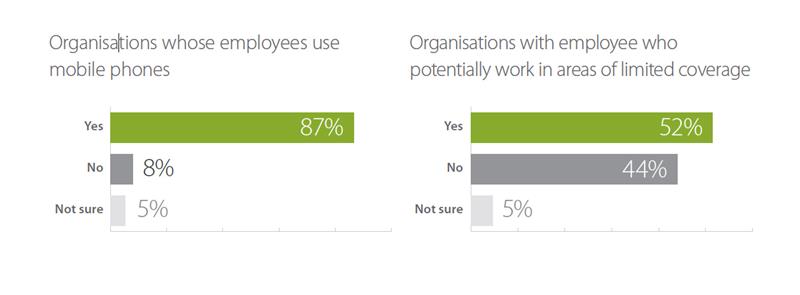45 per cent of the 180 facilities managers who responded to the survey said that they experienced blackspots around their site. According to a Hytera white paper, “The Unrealised Potential of Digital Mobile Radio”, which covers the results of the survey, these can be remedied by seeking advice from an authorised system integrator or two-way radio provider, and the use of the correct RF and antenna solutions for a site’s requirements coupled with the latest digital radio handsets and repeaters.
The problems experienced across sites were reported as:
- Issues with battery life – 47 per cent
- Blackspots (no coverage) – 46 per cent
- Poor sound quality – 39 per cent
- Issues with handsets breaking – 27 per cent
- Busy lockout (too much traffic) – 16 per cent
Half (50 per cent) of those organisations impacted by blackspots said that security would improve if these were resolved. Furthermore, 83 per cent of those suffering drop-outs in coverage say they also want better quality transmission from their handsets. 46 per cent said that they operate on a radio-to-radio direct mode basis.
Only 29 per cent of those surveyed said that their radios had a dedicated emergency button - a pre-programmed key on the handset that allows an alarm to be sent in the event of an emergency. Similarly, only 23 per cent of respondents said that the radios their teams were using featured ‘Man Down’ capabilities – which alert a central dispatcher, handset or emergency group when a radio is on its side. The presence of this feature rises to 30 per cent when Health and Safety teams use the radios. The survey also found only a third of respondents use the Lone Worker functionality offered by the latest two-way radios.
Use of safety features
- Priority communication channels – 68 per cent
- Lone worker – 33 per cent
- Dedicated emergency button – 29 per cent
- Man Down – 23 per cent
- GPS tracking – 10 per cent
The white paper responded to this findings, saying: “The overall picture is that, despite a growing knowledge of these features and the benefits of digital radio over classic analogue technology, radio behaviour continues to be very traditional – using radios solely as simple push-to-talk devices. With the majority of respondents stating they still operate radio-to-radio conventional, there isa huge opportunity to upgrade to a simple radio system which would allow businesses to maximise functionality, boost network resilience and improve responsiveness to emergency situations. Perhaps more importantly, staff should be trained and made aware of the features available in the device, even if they are a transient workforce. Business-focused end user training is vital if facilities managers are to extract full value from their investment in two-way radio systems.”
Survey respondents confirmed that, the majority of these two-way radio systems are being used by their Security teams, with Health and Safety personnel also using radio in approximately 50 per cent of operations. Customer Service teams were represented in just 25 per cent of respondents, while the larger networks also included Cleaning and Housekeeping teams.
The white paper says that “This under-usage in many departments shows that a number of businesses are not looking at the potential benefits two-way radio communication can deliver across the wider organisation. Instead, the primary focus is on using devices as a traditional point-to-point communication tool for security staff. Indeed, the low number of businesses currently using radios for customer service or operations roles suggests that opportunities are being missed that could result in improved productivity or a better customer experience.”
Who uses radio systems
- Security – 84 per cent
- Health and Safety – 49 per cent
- Customer service – 24 per cent
- Production – 12 per cent
- IT – six per cent
- Sales – four per cent
- Marketing – two per cent
Almost 87 per cent of those surveyed reported that employees were using mobile phones in addition to two-way radios. However, 56 per cent of respondents confirmed these employees may well be working in remote on-site locations with limited mobile phone coverage.

The white paper asserts that “… this makes a potential ‘Communications D-Day’ all the more likely for many of the organisations surveyed. That’s because while smartphones are a useful tool for e-mails and some job task systems, it’s clear that facilities managers are also relying on mobile phone networks as a backup to their two-way radio systems. Typically, this is to overcome specific challenges they are experiencing such as blackspots, sound quality issues or battery life problems.
"However, as the research reveals, those companies using mobile phones also admit that these devices don’t offer a reliable solution to their problems. Respondents cited issues such as poor or limited mobile coverage and confirmed that the handsets were far less rugged and often posed a potentially dangerous distraction for employees. Not to mention the fact that the employee is having to carry two devices.”
It adds that “Ideally, facilities managers need to speak with an authorised radio dealer who can easily run a coverage report, identify any upgrade requirements, and implement a simple personal digital network covering all the site communication requirements. These specialists can also recommend handsets that offer the required crystal-clear sound quality and long-lasting battery life that can easily outlast a shift.”



